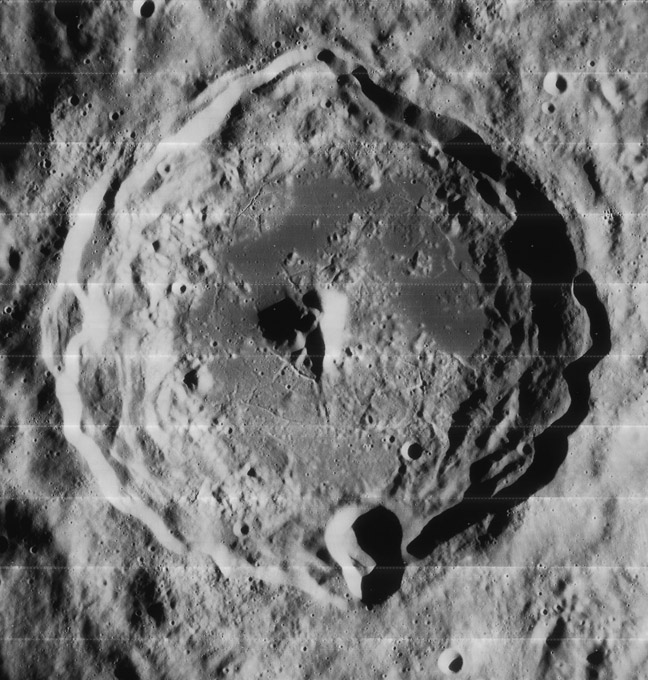Directly limbward of Grimaldi, nearly on the rim of the Orientale Basin, is a magnificent crater, usually poorly visible from Earth. Schlüter is 89 km wide with well-defined terraces and a tight central peak. A massive landslide on the north side of the crater created a large scallop on the rim. The mare patch on its floor was named Mare Hiemis by Franz, but the name was later deleted. The mare lavas cover nearly all of the northern half of the floor, but the southern side shows us what is missing: a patchwork of narrow rilles, concentric and radial to the rim. An unflooded edge of the floor at the upper left preserves rilles. On the left side of the floor, the rilles are partly visible within the mare material, but it's unclear if the lava is too thin to completely cover them or if they formed after it. Because there are few rilles exposed on the lava, I favor the first explanation. The pattern of rilles qualifies Schlüter to be a called a floor-fractured crater. The lava on the upper right side of the floor has sharp boundaries around otherwise lava-covered terrain - this looks like the lava level may have been higher and then subsided, or the terrain was uplifted after the lava was emplaced. Finally, I wonder if the crater on the southern rim formed from the impact of a single body, but its multi-level footing caused the peculiar shape? Or was it really two simulataneous impacts? How can we have so many questions about a crater we see so well?
Technical Details:
Lunar Orbiter IV image 4181 h3.
Related links:
The-Moon wiki page
A great terrestrial view
Yesterday's LPOD: Splotches and Mounds
Tomorrow's LPOD: The Deep South
COMMENTS?
Register, Log in, and join in the comments.




